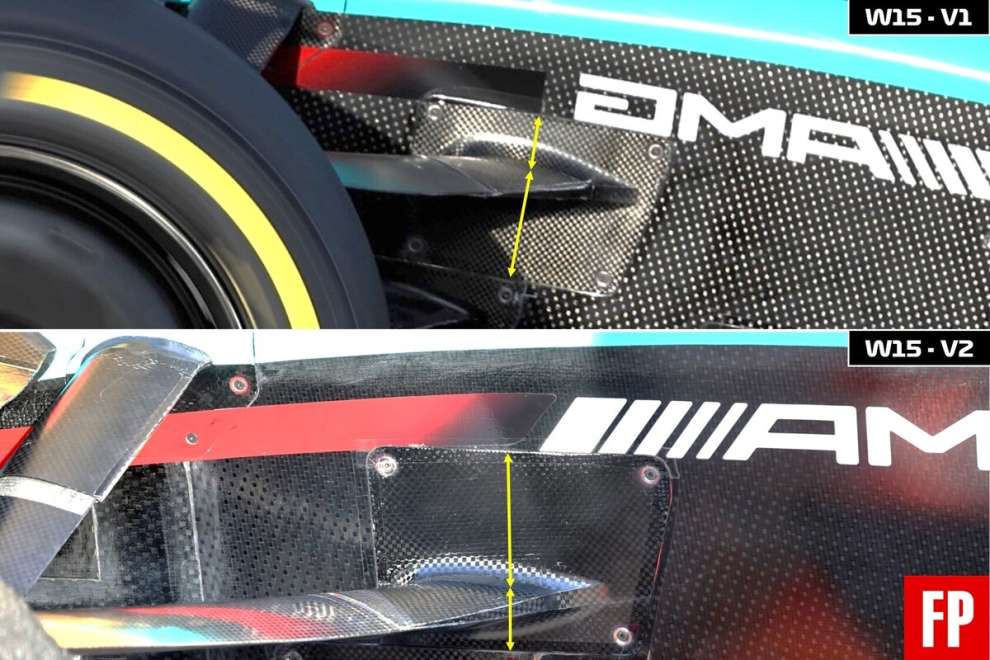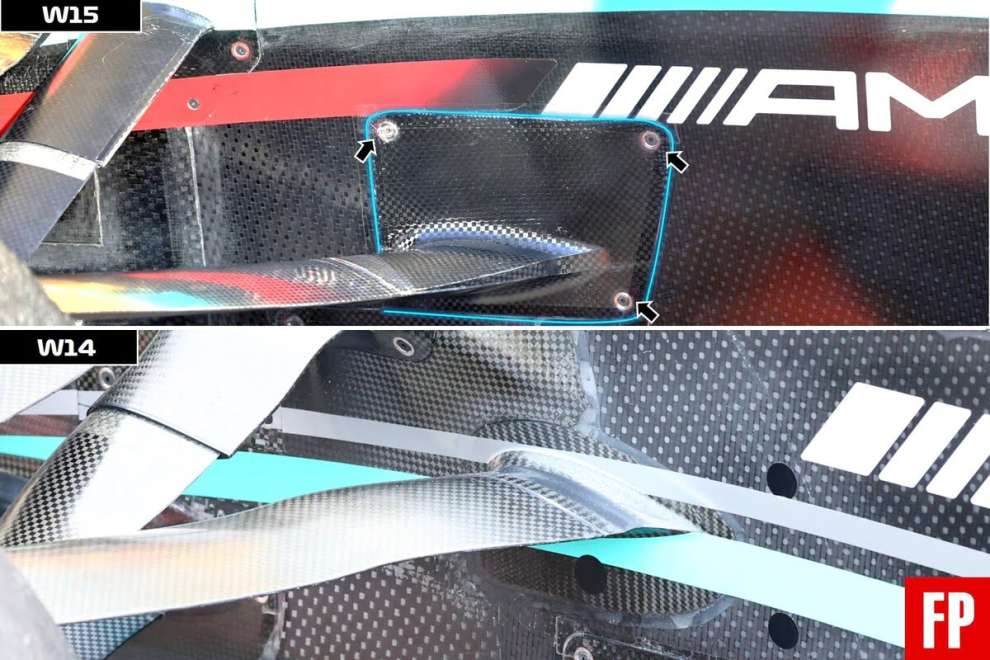By Carlo Platella
In 2020 Mercedes took the paddock by surprise, appearing on the track with the DAS, a system that allowed the convergence of the front wheels to be actively adjusted. Then in 2022 it was the turn of the zero-pods, the narrow-bellied bodywork which, although not rewarded by the results on the track, still amazed the environment with its audacity. Two years later the Brackley team is still at the center of attention. The new W15 ran in Bahrain with two different configurations for the front suspension, thanks to an idea by the Stella's structural designers.
Adjustable anti-dive for the W15
Mercedes showed up on the track in a different guise on the third day of testing in Bahrain. The W15 shows indeed a different position of the arm upper rear suspension of the front suspension, moved lower compared to the geometry used in the first two days. Mercedes thus adjusts the height difference between the two elements of the upper triangle, a parameter that determines the anti-dive level.

In detail, on the third day of testing Mercedes went to accentuate the anti-pitching kinematics, which helps stabilize the height and posture of the bottom during acceleration and braking, improving performance. However, the arrangement of the front suspension arms is also a question of compromise with the sensations transmitted to the steering wheel and the routing of the flows coming from the wing, sorting them between the bottom and the radiator inlet.
If Mercedes has been able to interchange two different geometries it is thanks to a modular design on the side of the chassis. In fact, you can see how the arm in question attaches to the body through a panel fixed through four metal inserts, allowing its replacement. This is a system that was instead absent on the 2023 W14.

Structure or development?
It will be interesting to note how the Brackley team intends to exploit the modularity of the W15's front suspension. A decidedly fascinating hypothesis is that Mercedes wants to adjust the anti-pitch level depending on the track, making it in effect a set-up parameter. However, it is also realistic that in Bahrain the team simply tested a new version of the suspension to be used for the rest of the season, like any update. Even in that case, however, the removable panel would remain highly valuable, allowing for continue to evolve the suspension during 2024 and potentially also in 2025, when it cannot be ruled out that the teams decide to reuse the current chassis. Certainly, after having already surprised with the rear suspension, the W15 never stops offering technical innovations.
#Mercedes #amazes #suspension #switchable